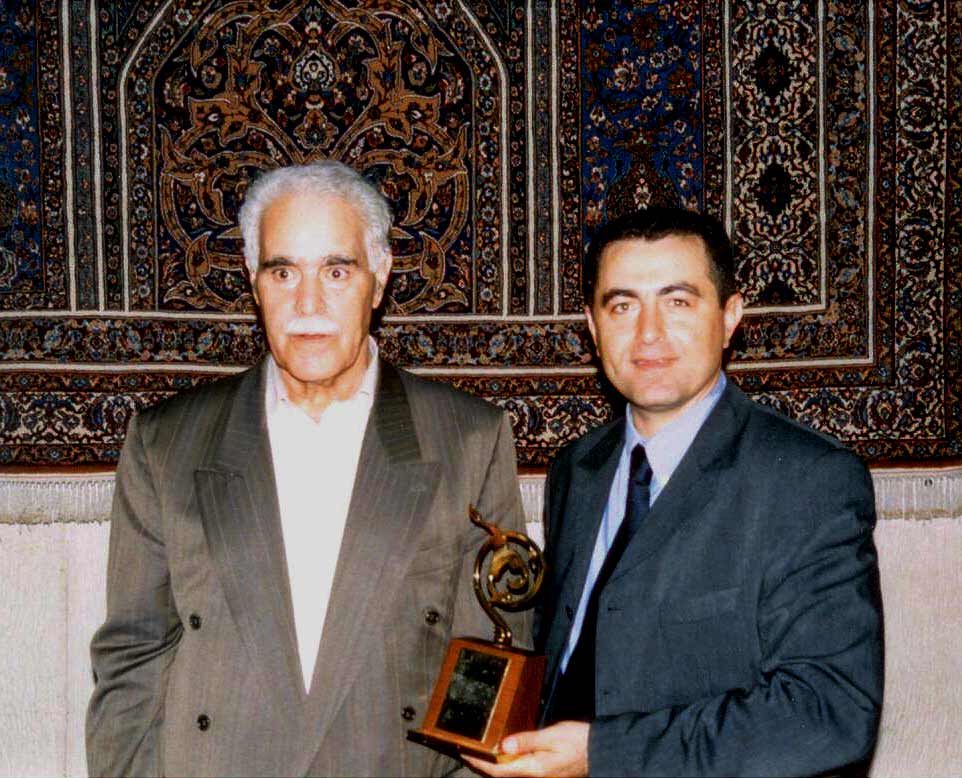
SEYED MOHSEN MOUSAVI SIRAT
The art of carpet weaving in Persia dates back to 3000 years ago. The oldest Persian carpet was found in Pazirik, Siberia, which possesses all the major specifications of Persian carpets’ designs and texture.Unfortunately, there is no Persian carpet left from pre-Islamic period, but it is obvious that it has been the outstanding and widespread expertise of Persians.
The same heritage is transferred to the Islamic period in form of fabrics and carpets and is spread thoroughly through the Islamic culture.Persian carpets have frequently been used as wall ornaments. The world famous magnificent "Baharestan" carpet from late Sasani period is a fine and sophisticated example of this art which became popular in medieval Europe and founded the art of tapestry weaving.
Tapestry weaving with its own principles and rules was revived two centuries ago in Iran. There are a number of Persian tapestries in museums in Asia, Europe and America. Among them are those by the master designer Forsat-o-doleh Shirazi.
In the last fifty years some workshops have continued to work on this magnificent art.
Mousavi Carpet Gallery is one of those places. It was established in 1960 and from the beginning concentrated on creativity and innovation in this art. Tens of extraordinary carpets with subjects taken from the famous paintings of the 16th century C.E. onward were created in this gallery. The gallery also pioneered the use of ancient Persian miniatures in carpets. An astonishing example is Prophet Mohammed (P B U H) ‘s ascension which took five years to weave.
The recent masterpiece of this gallery is the splendid collection of 26 carpets woven with soft wool and silk, 170 cm in 115 cm each with 3500 colors and 10000 knots per square decimeter supervised by the master "Seyed Aholhassan Mousavi Sirat & Seyed Mohsen Mousavi Sirat". The subjects were taken from the world famous epic called Shahnameh or the story of kings by the well known Persian poet Ferdosi.
This particular edition of the book belongs to the first half of the 10th century A.H. and is an artistic collection of Persian paintings, calligraphy and architecture from Safavieh period. It took hundreds of artists to compile the book with 22 fantastic paintings and elaborate illuminations.
To transfer the delicacy and complexity of the paintings and illuminations into the weaving required a certain commitment to solve the various problems encountered.
During the six years of weaving these carpets one hundred artists worked hard and did all in their power to create the masterpiece and to receive the supervisor’s appreciation.
An important point is the weaving of the poems and the calligraphy in Nastaligh characters which has traditionally been on the corner or with in the miniature.
The delicacy and style of Islamic calligraphy by bamboo pens in sophisticated dimensions made the weaving almost impossible, especially because the lines, points and curves which characterize Nastaligh had to be created as if they were written on the carpets by bamboo pens. To reach this goal, the weaving process was repeated many times before reaching the ideal.
The collection is accompanied by two other carpets. one, the portrait and the name of the famous poet Abolghasem Ferdosi and the other, the portrait and names of the supervisor and his colleagues which serve as an identification for the whole collection. The designs of these two carpets were also taken from the illuminations of the first two pages of the same book, but still some writings and paintings were added to them.
Marginal paintings with soft colors (Tasheer) were also added with an inspiration from ancient miniatures.
This is the first collection of Persian tapestries with one chronological subject and is unique in Iran as well as the whole world, save a couple of carpets with Rafael and Robans designs.
The collection presented here is the undying efforts of the laborious fingers of committed artists who think of carpet designing and carpet weaving superior to any worldly comparison and who have never hesitated to put forth the mystical art of carpet weaving through the delicateness of the movements of their humble hands.
Aidin Aghdashlou
Fall, 1997